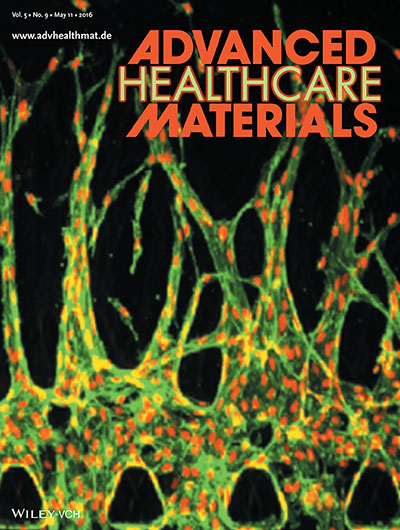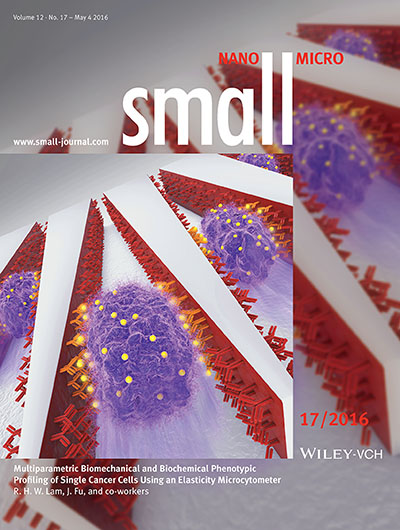 ME Associate Professor Jianping Fu‘s research has been selected for the cover story of the 2016 May 11 issue of Advanced Healthcare Materials and the 2016 May 4 issue of Small. Fu is also an Associate Professor of Biomedical Engineering and of Cell and Developmental Biology, as well as the Associate Director of the Michigan Center for Integrative Research in Critical Care.
ME Associate Professor Jianping Fu‘s research has been selected for the cover story of the 2016 May 11 issue of Advanced Healthcare Materials and the 2016 May 4 issue of Small. Fu is also an Associate Professor of Biomedical Engineering and of Cell and Developmental Biology, as well as the Associate Director of the Michigan Center for Integrative Research in Critical Care.
In this cover story, Fu’s lab has developed a microengineered chip mimicking the bone marrow physiological environment and demonstrated its utility to study leukemic cell induced angiogenesis (a dynamic cellular process of formation of new blood vessels from existing vasculatures). Increased vascularity has been commonly observed in bone marrows of patients with hematological malignancies (liquid tumors). However, the pathophysiology of leukemia induced angiogenesis in the bone marrow remains elusive. The microengineered bone marrow chip holds promise to elucidate complex cell–cell interactions in a bone marrow like environment and their roles in coordinating bone marrow angiogenesis, which may be useful for evaluating the effect of anti-angiogenic (anticancer) drug treatments on disease progression of individual leukemia patients.

In this cover story, Fu’s lab has developed a microfluidic device (the elasticity microcytometer) for quantitative measurements of cell size, cell deformability / stiffness, and expression levels of surface receptors simultaneously for the same single live cancer cells. Such multiparametric deep phenotyping of cancer cells at the single-cell level is of critical importance in the era of precision medicine to advance understanding of the precise relationship between gene mutation and cell phenotype and to elucidate biological nature of tumor heterogeneity and their potential biological and clinical implications. The elasticity microcytometer holds a great promise for studying intra-tumor cellular and molecular heterogeneity using low-abundance, clinically relevant human cancer cells.
